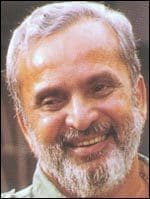
Karnataka is a cradle of civilization, a storehouse of vast cultural wealth. Home of diverse people with rich cultural heritage having common bonds, Karnataka is a living example of unity in diversity. Modern culture in Karnataka, is broadly believed to be based on the Vedic culture.
Kannada tells the story of antiquity. It is the story of the dynasties which flourished in the lands of the ancient Kaveri and Godaveri. Some of our most ancient and indigenous philosophy and knowledge has been made available to us through the richness of the oral tradition and the written texts of Kannada, while contemporary Kannada has propelled one of the most industrialised states to even greater sophistication.
There are certain definitive periods in the development of Kannada literature. The earliest treatise which we have access to is the Kavirajamarga. IT is authored by the Rashtrakuta King Nrupatunga in the 5th century. It gives a valuable insight into the psyche of a populase whom he describes as “brave warriors, poets good masters, handsome, meritorious, proud and prudent.” A race who composed poetry without much labour or erudition.

The 10th century was the golden age of Kannada literature. Three poets bridge this era like colossuses known as ‘Ratnatrayas’. They scintillated in the courts of the Kannada Kings, reflecting the politico-socio-religious mirror, in verse and prose so as to bedazzle. They were Pampa, Ponna and Ranna. All of them were Jains.
The 15th to 18th century saw Kannada evolving as a language. There was an immense contribution to the secular and scholastic structure of Kannada. There was immense, contribution to the secular and scholastic structure of Kannada. This was the age of Kumaravyasa.
Modern Kannada literature has its origin in the 1920s when literary renaissance began. B M Shri, Govind Pai and Alur Venkat Rao spearheaded it in Mysore, Mangalore and Dharwad regions respectively. B M Shri brought English meters to Kannada verse adding new dimension and cadences.
Kannada continues through the eighties and nineties as a language that compels and it is a testament to the matrix of excellence. Authors in Kannada have won the Jnanapith award seven times. K V Puttappa was the first one to get this coveted honour. Later D R Bendre, Shivaram Karanth, Masti Venkatesh Iyengar, Vinayak Krishna Gokak, U R Ananthmurthy and Girish Karnad.

Tulu Revival
The Tulu renaissance can be traced to the 1920’s and 30’s when the freedom struggle spread to this district. S U Paniyadi, litterateur, poet and a Gandhian, started reviving the language by writing in Tulu, albeit using the Kannada script. He even used the language to inspire people to fight the British.
The freedom struggle in this district was also a struggle for self-identity and rediscovery of cultural values. The establishment of the Tulu Mahasabha in 1928 under Paniyadi gave a boost to Tulu literature when poems, short stories, drama, Yakshagana ballad songs were produced. A movement encouraging people to write and speak in Tulu arose.
Though Tulu received a setback on Paniyadi’s death, Tulu theatre continued to gain popularity both in urban and rural centres. Finally in 1970’s Tulu gained recognition in academic circles which culminated in the Tulu Lexicon Its official recognition came in the form of All India Radio at Mangalore broadcasting Tulu programmes.
The Tulu Sahithya Academy was started in 1994, bringing together litterateurs, scholars, writers and lovers of the language. This renewed Tulu awareness and over 35 books were published representing folk stories, tales and epics.
Now, an organisation called Tulu Koota, is pressing the government to recognize Tulu and include it in the Eighth Schedule of the Constitution. Though indifference from politicians and educational institutions are proving a resistance to the revival movement, die-hard lovers of the language still believe that the renaissance is moving in the right direction and that little could stand in its way.
Tulu Lexicon
The year 1997 was a landmark for Tulu, when its most comprehensive and exhaustive lexicon was completed. It is surprising how Tulu managed to survive without a script of its own, as it borrows the Kannada script. The lexicon however was essential because there are over 25 lakh people speaking Tulu in the coastal belt of Karnataka.
Historically the Tulu people were ruled by the Kannada rulers, which made Kannada the official language. Tulu, remained largely colloquial and never came to the forefront.
Tulu was first used aggressively when the Basel missionaries set foot on this area. The Christian missionaries chose to spread the message of Christ in Tulu, to relate to the large Tulu population. It was during this period that the first Tulu dictionary of about 18,000 words was compiled by Reverend Manner.
Later, an interest in the language grew in academic circles. This, primarily, fuelled the Tulu Lexicon Project. Initiated by Prof K S Haridasa Bhat and under the guidance of its Editor-in-Chief, Dr U P Upadhyaya, the lexicon was completed after 18 years and after persistent badgering the Karnataka Government for funds.
The exhaustive lexicon comes in six volumes and is a result of thorough field research in variations in dialects, the reasons for variations, folk epics and ballads. The material was then transformed from an audiovisual format into a scientific categorization. It took almost a decade for the first volume of the lexicon to be published.
Crucial to preserving a culture is preserving its language and this is what the Tulu Lexicon has achieved. That is why it has been hailed as not just a dictionary but a cultural encyclopaedia.

Be the first to comment